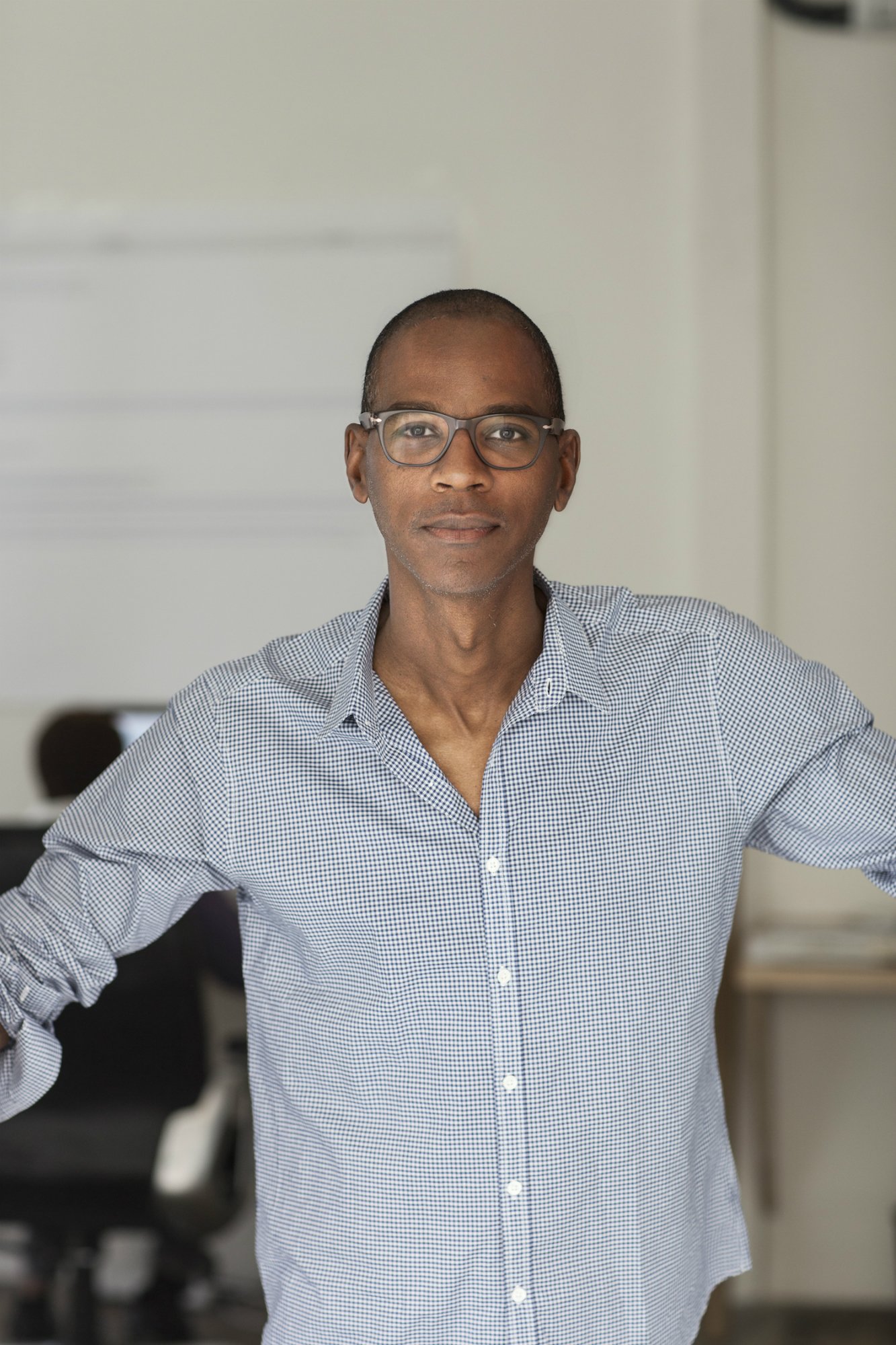
The LA-based artist Mark Bradford is following up his critically acclaimed US Pavilion at the Venice Biennale, which closed last weekend, with his most ambitious “waterfall” work to date. The new sculpture will be unveiled alongside work from his Venice presentation at the Baltimore Museum of Art in Maryland next fall.
The museum’s curator Katy Siegel, who also co-organized Bradford’s Venice exhibition, tells artnet News that the new work will expand on the Biennale installation—and take it further. Bradford had initially hoped to install a “waterfall” flowing out of the US Pavilion and into the Giardini “like a flood.” But the piece never materialized, on of a number of ideas considered.
Mark Bradford, Waterfall (2015) at Hauser & Wirth
In Baltimore, Bradford will get a second chance. He plans to create a spectacular work out of strips of painted and dyed fabric that will sweep through the museum’s lobby up to the galleries on the second floor, where the US iteration of “Tomorrow Is Another Day” will be installed from September 2018 until March 2019.
“Mark has been thinking about floods since Katrina,” Siegel says, referring to the devastating storm that struck New Orleans and the Gulf Coast in 2005. The significance of waterfalls also runs deep in the artist’s work. His Venice exhibition concluded with Niagara (2005), a video featuring the artist’s former neighbor, Melvin, walking away from the camera. It is an homage to Marilyn Monroe’s final scene in the 1953 film noir of the same name.
Still from Mark Bradford’s video in ‘Tomorrow Is Another Day’ at the US Pavilion at the 2017 Venice Biennale. Photo by Andrew Goldstein.
Bradford’s “waterfalls”—sculptural works made of painted and dyed strips of fabric that are about “force and power,” in Siegel’s words—also refer to the Niagara Movement in the first decade of the 20th century.
Black civil rights activists met on the Canadian side of the falls in 1905 to better organize their campaign against racial segregation and discrimination. A subsequent meeting took place at Harpers Ferry, West Virginia, where the Potomac and Shenandoah Rivers meet. Activists including W.E.B Du Bois aimed to bring about a “mighty current” of change. Their work laid the foundations of the NAACP.
As in Venice, Bradford has sought out a community group with which to form a partnership. He found the Greenmount West Community Center around two miles south of the museum. “At Greenmount, the idea is to do things together, as in sports, cooking and gardening, music, and also create space that allows people to be themselves as individuals, like the little boy who wants to crochet,” Siegel says.
Installation view, Mark Bradford: Tomorrow Is Another Day. Venice Biennale, US Pavilion, 2017. Photo: Joshua White. Courtesy the artist and Hauser & Wirth.
The artist and his studio will add silk-screening to the center’s activities, providing training and equipment in partnership with Noisy Tenants, a Baltimore-based organization that connects businesses with community groups.
And although his pavilion is closed, Bradford continues to support a store run by the non-profit Rio Terà dei Pensieri, which sells artisanal goods made by prisoners in Venice and the wider region.